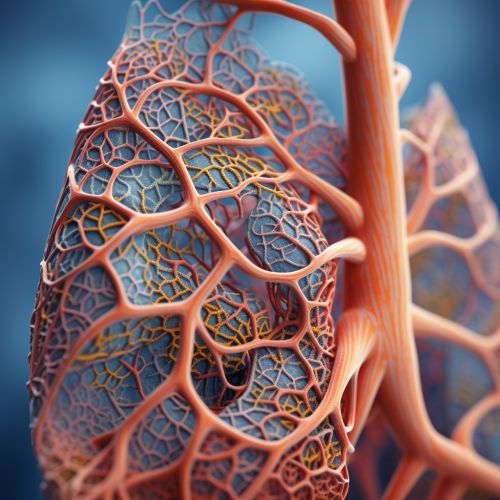Pleurisy
Definition and Overview
Pleurisy, also known as pleuritis, is an inflammation of the pleura, which are the two thin layers of tissue that separate the lungs from the chest wall. This condition can cause sharp chest pain (pleuritic pain) that worsens during breathing. Pleurisy can be caused by a variety of factors, including infections, autoimmune diseases, and lung diseases.


Causes
Pleurisy can be caused by a variety of conditions, most commonly viral infections such as the flu. Other causes can include bacterial infections like pneumonia and tuberculosis, fungal infections, parasitic infections, and noninfectious causes such as lung cancer, pulmonary embolism, and autoimmune diseases like lupus and rheumatoid arthritis. In some cases, the cause of pleurisy may be unknown, a condition referred to as idiopathic pleurisy.
Symptoms
The primary symptom of pleurisy is a sharp, stabbing chest pain that is often referred to as pleuritic pain. This pain typically worsens when the patient breathes in, coughs, or sneezes. Other symptoms can include shortness of breath, a dry cough, and a general feeling of being unwell. In severe cases, pleurisy can lead to complications such as pleural effusion, where excess fluid builds up in the pleural space, and pneumothorax, where air leaks into the pleural space causing the lung to collapse.
Diagnosis
The diagnosis of pleurisy typically involves a physical examination, during which a doctor will listen to the patient's lungs with a stethoscope. The doctor may hear a characteristic rubbing sound, known as pleural friction rub, which is caused by the inflamed layers of the pleura rubbing against each other. Further diagnostic tests may include a chest X-ray, CT scan, or ultrasound to visualize the lungs and pleura, and a blood test or sputum test to identify any underlying infections. In some cases, a biopsy of the pleura may be necessary to determine the cause of the inflammation.
Treatment
The treatment of pleurisy primarily involves managing the symptoms and treating the underlying cause of the inflammation. Pain relief is often achieved through the use of nonsteroidal anti-inflammatory drugs (NSAIDs) or other pain medications. If the pleurisy is caused by an infection, antibiotics or antiviral medications may be prescribed. In cases where pleural effusion has occurred, a procedure known as thoracentesis may be performed to drain the excess fluid from the pleural space. In severe cases, surgery may be necessary to remove the inflamed pleura, a procedure known as pleurectomy.
Prognosis
The prognosis for pleurisy largely depends on the underlying cause of the inflammation. In many cases, pleurisy caused by viral infections resolves on its own with rest and pain management. However, pleurisy caused by more serious conditions such as lung cancer or autoimmune diseases may require more intensive treatment and can have a more complicated prognosis.
Epidemiology
Pleurisy is a relatively common condition, although exact prevalence rates can vary depending on the population and the underlying causes of the inflammation. Pleurisy is more common in individuals with underlying lung diseases or immune system disorders, and can also be more common in certain geographic areas due to the prevalence of specific infectious diseases.
History
The term pleurisy comes from the Greek word "pleura," which means side or rib, and the suffix "-itis," which denotes inflammation. The condition has been recognized and described for centuries, with references to pleurisy appearing in ancient Greek and Roman medical texts. Over the years, our understanding of pleurisy and its causes has evolved significantly, with advances in medical imaging and diagnostic techniques allowing for more accurate diagnosis and treatment.
